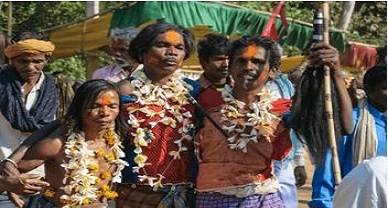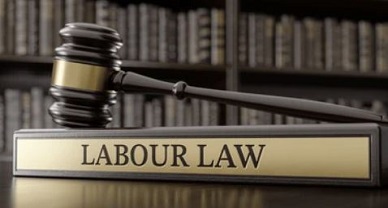Deliberating Colonial Policies to Understand the Causes behind Tribal Revolts in the Chota Nagpur Plateau – Part I
Research Problem
Examining the role of colonial policies in bringing such a socio-political situation in Tribal lives that they resorted to revolt against the Britishers.
Research Objectives
- To find out the cause, rationale, and repercussions of eminent domain on Tribal lives.
- To understand the political awakening among the Tribals.
- To analyse the role of local tribal leaders in realising their objective of ‘Abua raj.’
- To sum up the positive impacts of Tribal revolts in the Indian National Movement.
Research Methodology
The Methodology adopted by the researcher is Doctrinal Research.
Sources of Data: For this research, the author will depend upon the existing literature in the form of research articles, papers, books, et al. by various eminent historians and other forms of such Secondary sources.
Literature Review
Romila Thapar and Majid Hayat Siddiqi in their Chapter titled Chota Nagpur: the precolonial and colonial situation published by the UNESCO in the book titled Trends in ethnic group relations in Asia and Oceania provides a holistic point of view of the socio-political phases that have taken place in the region of Chota Nagpur Plateau. The discussion over Kol Uprising mentioned in the chapter have also helped in finding the causes and effects of the rebellion. However, the chapter fails to provide a wholesome point of view over the Santhal Rebellion and Munda Uprising which is one of the drawbacks that author wants to point out concerning this chapter.
Stacy L. Leeds in his research article titled By Eminent Domain Or Some Other Name: A Tribal Perspective On Taking Land published in Tulsa Law Review mentions how eminent domain has affected the Tribal population of India. Eminent Domain was a policy adopted by Britishers against the tribal land which is similar to nowadays ‘eminent domain’ policy followed by the State. The eminent domain is the power of the sovereign to acquire property of an individual for public use without the necessity of his consent. This power is based on sovereignty of the State.

The Unit 15’s chapter titled Anti-Colonial Tribal Movements in India is another very important source that elucidated about not only the socio-economic conditions of the tribals during the colonial period but impact of the British policies on the tribals. The tribal movements which were against colonial exploitation and oppression are very well elucidated in the Chapter. The Chapter is a wholesome brief of all the major exploiting socio-economic policies and the revolts that took place against them.
Sanchari Pal in her article titled 14 Forgotten Folk Uprisings That Prepared the Ground for Indian Independence published in The Better India has mentioned about all major 14 uprisings that took place against the exploitative policies of Britishers by the Tribal populace. She has further elucidated how these various uprisings, rebellions, revolts and insurrections helped and facilitated the Indian National Struggle Movement. The article maintained that though these revolts were often unsuccessful in uprooting the British as they were limited to specific are or to limited rights/interests, they prepared a foundation for the struggle that ultimately led to independence of India.
Bipan Chandra, Aditya Mukherjee and Sucheta Mahajan in another quite intense book – India’s Struggle for Independence – mention various tribal revolts. Elizabeth Rottger-Hogan in her research article titled Insurrection… or Ostracism: A study of the Santal rebellion of 1855 published in Contributions to Indian Sociology also mentions the valour of Santali tribes. It also throws light on the causes behind this uprising as well as the effects on the same on not only the Britishers but the National Freedom Struggle Movement as well.
Introduction
Yada yada hi dharmasya glanirbhavati bharata | Abhythanamadharmasya tadatmanam srijamyaham ||
Paritranaya sadhunang vinashay cha dushkritam | Dharmasangsthapanarthay sambhabami yuge yuge ||
Srimad Bhagvad Geeta in Chapter 4 Verse 7 and 8 mentions whenever dharma falls in society leading to the rise of adharma, I [Shri Krishna] will reincarnate and interfere to restore dharma.[i] Considering this shloka, I would like to deduce that it is not always Shri Krishna who reincarnate himself on earth but we, human also have a duty bestowed on us to hold and abide by Dharma. As a result, when adharma of British raj in form of exploitative police started suppressing Tribal population of India residing in Chota Nagpur Plateau, various tribal leaders such as Birsa Munda, Sidhu Murmu, Kanhu Murmu, and various others took the initiative to reinstate dharma by fighting against those policies through various tribal rebellions, revolts, and insurrections. It can be one of the reasons why even today their name in the state of Jharkhand is treated with due respect.[ii] Moreover, Birsa Munda, the leader of the Munda rebellion is considered a Bhagawan.
This further develops a curiosity that what were the causes, and rationale behind the policies of Britishers concerning the Chota Nagpur Plateau that were considered exploitative by the tribal people. Further, question arise that how tribals stood against the repressive policies of the British administration, which was already mighty enough and backed with highly advanced weapons. Moreover, it is evident from the tribal revolts that the political awakening of tribals was one of the chief reasons that led to the success of these revolts and rebellions to a certain extent.
The war cry – Abua Dishom, Abua Raj – is another example of political awakening among the tribal population reinforced by the Munda Rebellion under the tutelage of Bhagwan Birsa Munda.[iii] All these aforementioned questions are discussed in this paper. The paper has also endeavoured to showcase the relation of these tribal revolts with the National Freedom Struggle. The paper has argued that these tribal revolts have helped the Freedom Struggle in providing a base. Though there are a plethora of revolts and rebellions that have taken place in the Chota Nagpur Plateau region against Britishers, the paper relates the above questions to the tribal revolts and restricts itself to Kol Uprising, Santal Rebellion and Munda Rebellion.
Cause, Rationale behind the Policies of the British Concerning the Chota Nagpur Plateau
In India, the birth and rise of merchant capital businesses is extensively documented. They were created during Europe’s early capitalist history and initially played a constructive role in its economy. These firms in Great Britain were awarded a monopoly for commerce with the eastern areas of the world, including India, in 1600 when they formed the East India Company. The company initiated the colonisation of India as a British colony. The first interaction with the Chota Nagpur territory occurred in 1772, when Captain Camac, a company officer, swapped turbans with Drip Nath Sahi, the Chota Nagpur monarch, who recognised the British suzerainty.[iv] Almost immediately, the taxes sought proved to be too high for the raja to pay for several reasons. His first promise to pay 12,000 rupees per year was then upped to 15,000 rupees, which was still too much for him to bear. The raja’s refusal to pay mankins led to riots on many occasions, including in Tamar in 1789 and again in 1807 and 1808. After he was compelled to pay his debts in 1809, the settlement stated that he would be responsible for the expenditures of maintaining a police force in the region, which he lost control of in 1819. The monarch was burdened much more by these new agreements with the Chota Nagpur Raj.[v] He and his subordinate rajas began to rent out their estates to ‘aliens’ or non-aboriginal men of Bihar, as they were not used to making regular tax payments or paying tribute. Such payments were not burdensome in and of themselves. They were heavier throughout the rest of Bengal, and zamindars who couldn’t pay had to sell their land, which, despite its agricultural potential, didn’t always fetch a good price.[vi]
However, because this area was underdeveloped in terms of agriculture, there was nothing in this area that could have been economically sold on a market with little differentiation to acquire food grains or other commodities. As a result, there was a need for males who could furnish the funds needed to pay the charge. This was possible because of the rents they paid for the leases granted to them on land farmed by the native inhabitants. This process of subinfeudation from on high—the giving of land to thekedars (contractors) who subsequently acquired zamindari (land ownership rights)—alters the existence of a tribal people, which was previously unused to paying any rent other than a token quit-rent to the manki or munda (village headmen). The intrusions into Chota Nagpur by ‘aliens’ from Bihar’s non-tribal districts had really started much earlier. However, the commercialization of land and agriculture in the areas surrounding Chota Nagpur, as well as the new land purchasers’ incapacity to check the influence of previous owners on Bengal estates, has hastened this process.
In other regions of India, zamindaris had been auctioned for arrears resulting from over-assessment under the Cornwallis system of permanent settlement of payment claims (1793). Between 1800 and 1840, more and more was really gathered in the surrendered and conquered provinces to the north-west of Chota Nagpur, despite the company’s repeated realisation that the proportion of gross product it wanted was large and a theoretical scaling down essential. This had a levelling effect on the area as traditional levy payers of the previous government fell prey to a burgeoning, usurious moneylending class. Chota Nagpur lacked such a colossal land revenue requirement. However, such recurring levies proved to be excessive given the poor level of agricultural yield in a largely subsistence agriculture area. The Kols uprising (1831-32),[vii] which was geared against both ‘foreign’ Indians and white men, was the outcome of the pressures described above.
Furthermore, another major uprising was Santhal Rebellion. The Santhals relied on woodlands to survive. The British East India Company established the Damin-i-koh area in modern-day Jharkhand in 1832 and welcomed Santhals to reside there. Santhals from Cuttack, Dhalbhum, Manbhum, Hazaribagh, Midnapore and other places came to settle due to promises of land and economic benefits. The British East India Company’s tax-collecting middlemen, mahajans and zamindars, soon controlled the economy. Many Santals become victims of unethical money lending. They were given loans at astronomical interest rates. Their estates were forcibly stolen and they were forced into bonded labour when they were unable to repay the loan. Sidhu and Kanhu Murmu, two brothers who commanded the Santals throughout the insurrection, were the catalysts for the rebellion.[viii]
Author: Kaustubh Kumar, in case of any queries please contact/write back to us via email to chhavi@khuranaandkhurana.com or at Khurana & Khurana, Advocates and IP Attorney.
REFERENCES
[i] “Bhagavad Gita: Chapter 4, Verse 7”, Bhagavad Gita, available at <https://www.holy-bhagavad-gita.org/chapter/4/verse/7> (last visited on May 15, 2022)
[ii] “Jharkhand: Hemant Soren pays respect to Santhal rebellion leaders Sidhu, Kanhu after taking oath as CM”, Business Standard, December 29, 2019, available at <https://www.business-standard.com/article/news-ani/jharkhand-hemant-soren-pays-respect-to-santhal-rebellion-leaders-sidhu-kanhu-after-taking-oath-as-cm-119122900647_1.html> (last visited on May 15, 2022)
[iii] Ajeyo Basu, “Birsa Munda: ‘Bhagwan’ of tribals who became icon of resistance against British rule”, News 24, November 15, 2021, available at <https://news24online.com/news/india/birsa-munda-bhagwan-tribals-who-became-icon-resistance-against-british-rule-c662a85e/> (last visited on May 15, 2022)
[iv] Romila Thapar and Majid Hayat Siddiqi, “Chota Nagpur: The Pre-Colonial and Colonial Situation”, in Trends in ethnic group relations in Asia and Oceania 34 (UNESCO, 1979).
[v] JC Jha, “Some Light On The Mutiny In Chota Nagpur” 28 Proceedings of the Indian History Congress 392 (1966).
[vi] Supra note 4 at 35.
[vii] Jagdish Chandra Jha, “The Kol Rising Of Chotanagpur (1831-33)—Its Causes” 1958 Proceedings of the Indian History Congress 440 (1958).
[viii] Amar Nath Jha, “Locating The Ancient History Of Santal Parganas” 70 Proceedings of the Indian History Congress 187 (2009-2010).


